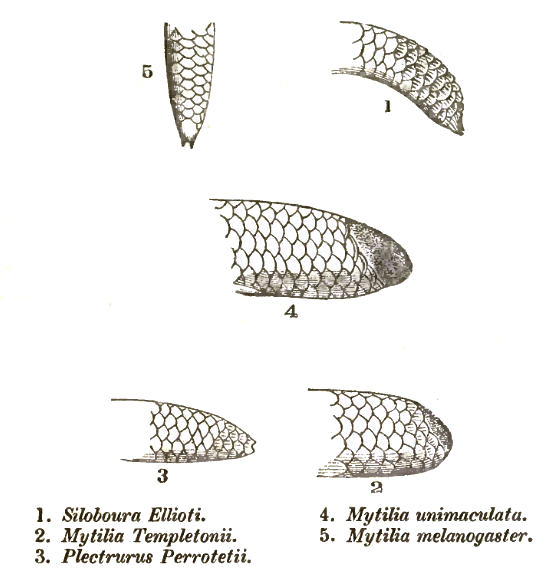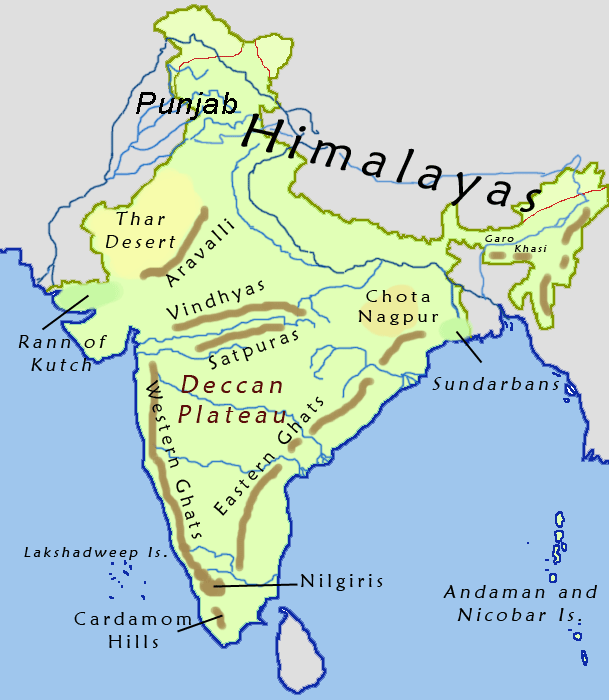|
Uropeltidae
The Uropeltidae, also Common name, commonly known as shield-tail snakes, shield-tailed snakes or earth snakes, are a Family (biology), family of primitive, nonvenomous, burrowing snakes native to Peninsular India and Sri Lanka. The name is derived from the Greek words ('tail') and ('shield'), indicating the presence of the large keratinous shield at the tip of the tail. Seven or eight Genus, genera are recognized, depending on whether ''Teretrurus rhodogaster'' is treated in its own genus or as part of ''Brachyophidium''. The family comprises over 50 species. These snakes are not well known in terms of their diversity, biology, and natural history. Description Snakes in the family Uropeltidae are small snakes, with adults growing to a total length (including tail) of . They are adapted to a fossorial way of life, which is apparent in their anatomy. The skull is primitive and inflexible, with a short, vertical quadrate bone and rigid jaws; the coronoid bone is still present in t ... [...More Info...] [...Related Items...] OR: [Wikipedia] [Google] [Baidu] |
Uropeltis Ceylanica
:''Common names: Ceylon earth snake, Cuvier's shieldtail, Kerala shieldtail.'' ''Uropeltis ceylanica'' is a species of nonvenomous shieldtail snake in the Family (biology), family Uropeltidae. The species is Endemism, endemic to the Western Ghats of South India. No subspecies are currently recognized as being valid, but the presence of several synonyms, many recently resurrected, calls for further taxonomic studies of this species complex. It is a burrowing snake with a pointy head equipped to penetrate the soil. It has a thick tail which looks as if it has been cut at an angle. In Kerala it's called ''iru thala moori'', which means two headed organism, as the tail end looks like another head. It primarily eats earth worms. Geographic range ''U. ceylanica'' is found in the Western Ghats of southern India from Goa, Castle Rock, Karnataka, Castle Rock southwards to Travancore (Agasthyamalai) near Trivandrum. The Type locality (biology), type locality given as "Ceylan"— is a mista ... [...More Info...] [...Related Items...] OR: [Wikipedia] [Google] [Baidu] |
Teretrurus Rhodogaster
''Teretrurus rhodogaster'' is a species of nonvenomous shield tail snake, endemic to the Western Ghats of India. It is known as Wall's shield-tail snake, the Palni Mountain burrowing snake, or the red-bellied shield-tail snake. It is perhaps the smallest species of shield-tail snake, with adults barely exceeding . Geographic range It is found in South India, in the Western Ghats encompassing the Palni Hills The Palani Hills are a mountain range in the southern Indian states of Tamil Nadu and Kerala. The Palani Hills are an eastward extension of the Western Ghats ranges, which run parallel to the west coast of India. The Palani Hills adjoin with ... (Shembaganur in Kodaikanal Hills, Palnis). The type locality given is "Palnai Hills." References Further reading * External links * {{Taxonbar, from=Q2375571 Uropeltidae Endemic fauna of India Reptiles of India Snakes of Asia Taxa named by Frank Wall Reptiles described in 1921 Taxobox binomials not recognized ... [...More Info...] [...Related Items...] OR: [Wikipedia] [Google] [Baidu] |
Snake
Snakes are elongated limbless reptiles of the suborder Serpentes (). Cladistically squamates, snakes are ectothermic, amniote vertebrates covered in overlapping scales much like other members of the group. Many species of snakes have skulls with several more joints than their lizard ancestors and relatives, enabling them to swallow prey much larger than their heads ( cranial kinesis). To accommodate their narrow bodies, snakes' paired organs (such as kidneys) appear one in front of the other instead of side by side, and most only have one functional lung. Some species retain a pelvic girdle with a pair of vestigial claws on either side of the cloaca. Lizards have independently evolved elongate bodies without limbs or with greatly reduced limbs at least twenty-five times via convergent evolution, leading to many lineages of legless lizards. These resemble snakes, but several common groups of legless lizards have eyelids and external ears, which snakes lack, althoug ... [...More Info...] [...Related Items...] OR: [Wikipedia] [Google] [Baidu] |
Eastern Ghats
The Eastern Ghats is a mountain range that stretches along the East Coast of India, eastern coast of the Indian peninsula. Covering an area of , it traverses the states and union territories of India, states of Odisha, Telangana, Andhra Pradesh, Karnataka, and Tamil Nadu. The range forms a discontinuous chain of mountains along the eastern edge of the Deccan Plateau, stretching from north of the Mahanadi River in Odisha to Vaigai River in Tamil Nadu at the southern end of the peninsula. The Eastern Ghats meet the Western Ghats at the Nilgiris. The average elevation is around and Arma Konda is the highest peak in the mountains at . Geological evidence indicates that the mountains were formed during the archeozoic era and became part of the Indian subcontinent post the break-up of the supercontinent of Rodinia and the formation of Gondwana. The mountains were formed through further metamorphism during the mid-Proterozoic era. The northern section of the range has an elevation r ... [...More Info...] [...Related Items...] OR: [Wikipedia] [Google] [Baidu] |
Central India
Central India refers to a geographical region of India that generally includes the states of Chhattisgarh and Madhya Pradesh. The Central Zonal Council, established by the Government of India, includes these states as well as Uttar Pradesh and Uttarakhand to the north. The inclusion of Uttarakhand extends the region to the Himalayan border with Tibet/China. Other definitions Another approach, historically more usual, is to base "Central India" on a north-south axis, making it the part of India that is south of North India and north of South India; the definition of North India also varies hugely, but that of South India is generally agreed. This definition includes either some or all of the Deccan, in particular Maharashtra, and may or may not include some of the Indo-Gangetic Plain to the north. If Maharashtra is included "Central India" includes a good part of the western coast, including Mumbai, but the eastern coast is never included, as Odisha stretches down to me ... [...More Info...] [...Related Items...] OR: [Wikipedia] [Google] [Baidu] |
Maria Viswasam Rajendran
Maria may refer to: People * Mary, mother of Jesus * Maria (given name), a popular given name in many languages Place names Extraterrestrial *170 Maria, a Main belt S-type asteroid discovered in 1877 *Lunar maria (plural of ''mare''), large, dark basaltic plains on Earth's Moon Terrestrial *Maria, Maevatanana, Madagascar *Maria, Quebec, Canada *Maria, Siquijor, the Philippines * María, Spain, in Andalusia *Îles Maria, French Polynesia *María de Huerva, Aragon, Spain *Villa Maria (other) Arts, entertainment, and media Films * ''Maria'' (1947 film), Swedish film * ''Maria'' (1975 film), Swedish film * ''Maria'' (2003 film), Romanian film * ''Maria'' (2019 film), Filipino film * ''Maria'' (2021 film), Canadian film directed by Alec Pronovost *''Being Maria'', 2024 French film released as ''Maria'' in France * ''Maria'' (2024 film), American film * ''Maria'' (Sinhala film), Sri Lankan upcoming film Literature * ''María'' (novel), an 1867 novel by Jorge Isaacs * ''Mar ... [...More Info...] [...Related Items...] OR: [Wikipedia] [Google] [Baidu] |
Leptotyphlops
''Leptotyphlops'' is a genus of nonvenomous blind snakes, commonly known as slender blind snakes and threadsnakes, in the family Leptotyphlopidae. The genus is endemic to and found throughout Africa. Eleven species have been moved to the genus ''Trilepida'', and other species have been moved to the genera '' Epacrophis'', ''Epictia'', ''Mitophis'', '' Myriopholis'', ''Namibiana'', '' Rena'', '' Siagonodon'', '' Tetracheilostoma'', and '' Tricheilostoma''. Description Most species of ''Leptotyphlops'' look much like shiny earthworms. They are generally black, grey, or blackish-brown and their scales give them a segmented appearance. Their common name comes from the fact that their eyes are greatly reduced almost to the point of uselessness, and hidden behind a protective head scale. The species which are called thread snakes are so named because of their very narrow, long bodies. Behavior All blind snakes including those of the genus ''Leptotyphlops'' are burrowing snakes, spen ... [...More Info...] [...Related Items...] OR: [Wikipedia] [Google] [Baidu] |
Snake Scales
Snakes, like other reptiles, have skin covered in scales.Boulenger, George A. 1890 The Fauna of British India. p. 1 Snakes are entirely covered with scales or scutes of various shapes and sizes, known as snakeskin as a whole. A scale protects the body of the snake, aids it in locomotion, allows moisture to be retained within, alters the surface characteristics such as roughness to aid in camouflage, and in some cases even aids in prey capture (such as '' Acrochordus''). The simple or complex colouration patterns (which help in camouflage and anti-predator display) are a property of the underlying skin, but the folded nature of scaled skin allows bright skin to be concealed between scales then revealed in order to startle predators. Scales have been modified over time to serve other functions such as " eyelash" fringes, and protective covers for the eyes [...More Info...] [...Related Items...] OR: [Wikipedia] [Google] [Baidu] |
Ventral Scales
In snakes, the ventral scales or gastrosteges are the enlarged and transversely elongated scales that extend down the underside of the body from the neck to the anal scale. When counting them, the first is the anteriormost ventral scale that contacts the paraventral (lowermost) row of dorsal scales on either side. The anal scale is not counted.Campbell JA, Lamar WW. 2004. The Venomous Reptiles of the Western Hemisphere. 2 volumes. Comstock Publishing Associates, Ithaca and London. 870 pp. 1500 plates. . The term gastrostege (from Greek γαστήρ, γαστρός = belly and στέγη, στέγος = cover, roof) was more often used in the older literature, especially pre-1900 but is rarely used today. Related scales * Preventral scales * Anal scale * Subcaudal scales * Paraventral scales See also * Snake scale Snakes, like other reptiles, have skin covered in scales.Boulenger, George A. 1890 The Fauna of British India. p. 1 Snakes are entirely covered with scales or ... [...More Info...] [...Related Items...] OR: [Wikipedia] [Google] [Baidu] |
Alice Georgie Cruickshank Grandison
Alice may refer to: * Alice (name), most often a feminine given name, but also used as a surname Literature * Alice (''Alice's Adventures in Wonderland''), a character in books by Lewis Carroll * ''Alice'' series, children's and teen books by Phyllis Reynolds Naylor * ''Alice'' (Hermann book), a 2009 short story collection by Judith Hermann Computers * Alice (computer chip), a graphics engine chip in the Amiga computer in 1992 * Alice (programming language), a functional programming language designed by the Programming Systems Lab at Saarland University * Alice (software), an object-oriented programming language and IDE developed at Carnegie Mellon * Alice (Microsoft), an AI project at Microsoft for improving decision-making in economics * Alice mobile robot * Artificial Linguistic Internet Computer Entity, an open-source chatterbot * Matra Alice, a home micro-computer marketed in France * Alice, a brand name used by Telecom Italia for internet and telephone services Vide ... [...More Info...] [...Related Items...] OR: [Wikipedia] [Google] [Baidu] |



